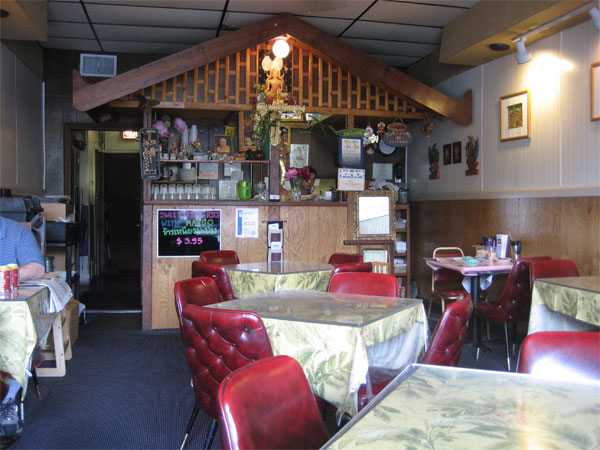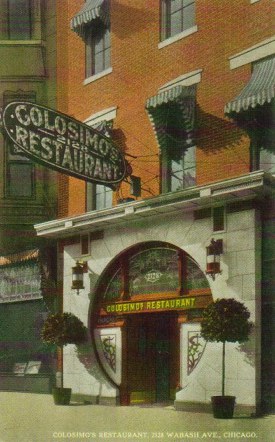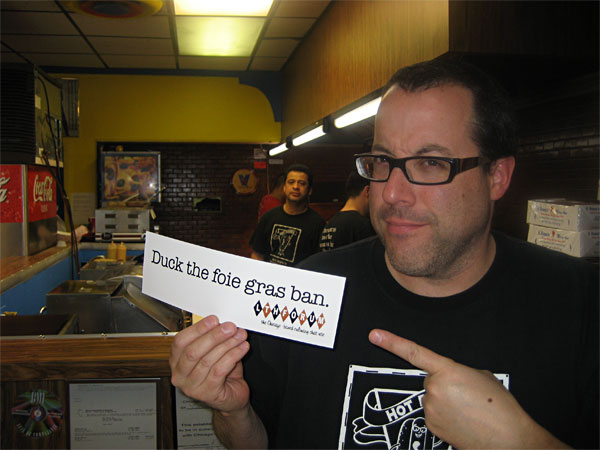Chicago magazine has folks a-flutter (you can’t say a-twitter anymore) with a list of the 40 Greatest Chicago Restaurants of All Time. Okay, I’ll play, I’m always happy to see the past get some attention alongside the trendy. Chicago’s list is pretty much what you’d expect: three parts hot restaurants of today (Alinea, Avec) or the very recent past (Le Francais, Gordon), one part names of the more distant past whose luster still lasts (The Bakery, Henrici’s), one part nostalgia for North Shore folk who grew up on the likes of Fanny’s in Evanston or Don Roth’s.
Of course, some of this is pure hypothesizing about things we’ll never have direct experience of, like a debate over whether John Barrymore or Richard Burbage was a better Hamlet; even though a snippet of Barrymore’s Hamlet is preserved in a screen test, we can never see it with the eyes that found it revelatory in the 1920s, and we couldn’t eat at The Bakery and find it new now, either. Really, this is more like a list of the most memorable or influential restaurants, and in that sense I’ll throw out five of my own that I would replace something on Chicago’s list with.

Rosded.
Chicago’s pick: Arun’s
My pick: Thai Town
Enough already about Arun’s, a temple of overpriced Thai dining which Chicago magazine has been bowing down to for two decades. Erik M., whose knowledge of Thai food in Chicago is light years beyond anyone’s (even though he doesn’t live here any more), credits Thai Town at Belmont and Clark, in its original incarnation in the early 1970s, as the first Thai restaurant that Thais took seriously, or that took its own cuisine seriously. The owner later opened Thai Villa at Western and Winnemac, helping launch the little Thai restaurant and shopping enclave near Lincoln Square that still includes many of the most authentic and venerable Thai restaurants. Neither of his restaurants exists today in anything resembling its original form, but I suspect Lincoln Square’s Rosded, which dates to around the same vintage (and is pictured above), conveys much of the atmosphere of these prototypes of one of Chicago’s great glories of ethnic dining.

Chicago’s pick: Spiaggia
My pick: Colosimo’s
Nothing against Spiaggia, hey, I had my wedding reception there, but before anybody needed to revitalize Italian food in Chicago and return it to its authentic roots, first they had to bastardize it and give it its colorful reputation in America. And Big Jim Colosimo’s joint did just that, introducing Chicagoans to both the pleasures of hearty red sauce Italian and to the illicit delights of dining amidst mobsters, not least on the day in 1920 that Big Jim himself was gunned down in it, turning control of the nascent Outfit to Johnny Torrio, who in turn would retire and hand the keys to his young lieutenant, Alphonse Capone. (That quintessential Chicago dish, Chicken Vesuvio, is often attributed to Colosimo’s, though Rene G says there’s no documentation to support that and my bet is the dish originated at a restaurant actually called Vesuvio which was in existence at roughly the same time.) Postcards and matchbooks are worth many thousands of words here, so check out this page full of Colosimo’s memorabilia, and savor a reputation we still haven’t escaped.

Chicago’s pick: Avec
My pick: The Dill Pickle Club
Today it’s radical when guys who own a fancy restaurant go downscale and put in community seating so people might actually talk to each other, gingerly. Back when the Dill Pickle Club opened in 1916, radical genuinely meant radical, in dress, behavior and ideas, and could get you and your whole community of Wobblies, hobos, poets, slumming trust fund types and dope fiends arrested. Mainly a “little theater,” the place also had a tearoom, readings and lectures by anybody willing to stand up and take a chance, and in general was the crossroads of intellectual ferment across class lines in this rude place by the lake during the pre-Depression era. Everything Wicker Park or any other center of hipsterism wants to be, the Dill Pickle Club was. Here’s a good overview.

Rib tips, Clarksdale, MS
Chicago’s pick: Carson’s
My pick: the first guy from Mississippi to start selling rib tips and hot links on the South Side
Not having grown up here, I don’t have nostalgia for any old white people’s barbecue joint— Carson’s, Russell’s, Twin Anchors— and so I’m much more interested in Chicago’s indigenous black style, the rib tip and hot links joints that would eventually be associated with aquarium smokers. Before the aquarium smoker came to be, though, somebody was making this stuff over a 30-gallon drum cut in half in a vacant lot somewhere, for his fellow transplants from Mississippi come to seek work in the North. While he filled the air with smoke, maybe a neighbor named Chester Burnett started filling the air with blues at the same time. We remember Howlin’ Wolf; the guy who fed him, not so much, but here’s to his memory, whoever he was.

Chicago’s Pick: Ambria
My pick: Hot Doug’s
It kind of says it all that the only place actually busted under our short-lived foie gras ban wasn’t a French restaurant but a hot dog stand. Chicago honors Ambria, the place that represented Rich Melman and Lettuce’s graduation to the big leagues of fine dining in their view, when a better choice would be Fritz That’s It, R.J. Grunt’s, the beginning of the Melman empire and the jokey cartoonization of dining out that dominated our scene through so much of the 70s and 80s. But to me Melman’s conscious climb from low to high over the years is trumped by Doug Sohn, who simply saw no contradiction in putting foie gras, artisanal cheese and truffle honey on a sausage, and then naming it for someone on American Idol. He’s the godfather of all the high-low combinations that are currently one of the liveliest aspects of our dining scene— or at least the Solozzo to Bayless’ Don Vito.
[note: I thought I had read somewhere that Fritz That’s It actually predated Grunt’s, but that the Melman corporate history had been rewritten to accommodate the one that still existed and make it the official beginning of the empire. But David Hammond disputed this, and when I checked with Peter Engler/Rene G, he was quite certain that Grunt’s really was first and that Fritz actually came third, after Jonathan Livingston Seafood. Also, thanks to Gaper’s Block for the link!]


 If you like this post and would like to receive updates from this blog, please subscribe our feed.
If you like this post and would like to receive updates from this blog, please subscribe our feed.




